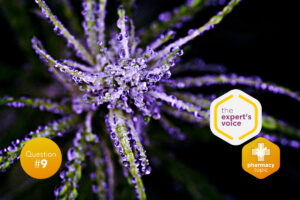Medical cannabis has seen a huge surge in usage and acceptance as a legitimate remedy for a wide range of medical conditions that have been difficult to treat with traditional medicines. Tetrahydrocannabinol (THC) and Cannabidiol (CBD), which are among the most commonly used cannabis derivatives extracted from the cannabis plant in medical treatments, have brought hope to patients suffering from life-altering medical conditions like chronic pain and epilepsy. Treatments with these compounds have shown a great deal of promise in clinical reports, providing significant symptom relief and improving the quality of life for many patients around the world. Patients undergoing chemotherapy and in need of stimulants to boost their appetite have found THC to be particularly effective in helping them manage their nausea and improve their overall food intake. CBD, on the other hand, has demonstrated significant efficacy in reducing seizures and alleviating anxiety while providing anti-inflammatory benefits, which has made it a valuable treatment option for conditions such as epilepsy, anxiety disorders, and various inflammatory conditions. While many US states have legalized medical cannabis, with more inching towards that, as is the case with several European countries, the lack of standardized regulations, safety, and quality protocols have made medical cannabis treatments inconsistent and to some extent unreliable. Since each US state and every country has created their own medical cannabis regulations and guidelines for the use of the drug in their jurisdiction, there have been noticeable and concerning inconsistencies in the quality, safety, and efficacy of medical cannabis products. These discrepancies have and will continue to create various therapeutic outcomes and put the lives of patients at risk unless they are addressed. Approaching medical cannabis quality standardization with a comprehensive and unified regulatory framework is essential to ensure consistent product quality, enhance patient safety, and provide reliable therapeutic benefits.
Medical Cannabis Regulations in Europe
Although medical cannabis has been available on a prescription basis in the European Union for quite a while now, there still remains a void for a harmonized regulatory framework for its approval and distribution. Although this article has primarily been focusing on medical cannabis, the EU has made efforts to clearly define what is considered medical cannabis and cannabis-based medicines. The European Union Parliament’s resolution 2018/2775, passed in 2019, makes this distinction clear by emphasizing that only cannabis-based medicines undergo regular clinical trials like all other medicines and have to be assessed and approved before hitting the market. However, despite these efforts, member states of the European Union are yet to formally adopt a collective approach to regulate medical cannabis cultivation, manufacturing, and labeling. The concerns that arise from the lack of uniformity in labeling and the different legislative and regulatory frameworks when it comes to medical cannabis have led to inconsistencies as was highlighted in the 2018 report published by European Monitoring Centre for Drugs and Drug Addiction. Since medical cannabis laws are largely at the state level for now, this creates headaches for manufacturers and patients within the EU borders as they have to conduct due diligence to navigate the varying regulations and requirements of each member state. In a path towards uniformity, in 2019 the European Medicines Agency (EMA) granted GW Pharma the first EU-wide marketing authorization for a CBD-based product, marking a significant step towards standardizing medical cannabis regulations across the EU. European Union market authorization plays a key role in ensuring consistent quality, safety, and efficacy of all medicines, and there is no doubt medical cannabis manufacturers and patients will benefit from such measures.
Medical Cannabis Regulations in The US
According to the National Conference of State Legislatures, as of 2023, 38 US states and 3 territories and the District of Columbia had legalized cannabis for medical use. As is the case in Europe, individual state policies regarding the cannabis plant and its derivatives currently serve as the primary laws determining the legality and usage of medical cannabis products in the United States. The absence of solid federal legislation governing the use and manufacturing of these products has only fueled confusion, leaving patients, medical providers, and healthcare institutions without clear, consistent guidance. Despite medical cannabis being legal in a number of states, its illegal status at the federal level has made its use and acceptance even harder. The contradiction has not only created an ambiguous atmosphere for patients but has also brought new challenges for healthcare providers, hindering clinical applications and widespread use in patients who are in desperate need of the drug.
The Future of Global Quality Standardization of Medical Cannabis
The cannabis plant is unique, and although a cannabis plant grown in Ohio may share some similar properties with a plant in New York, it does not mean that they have the same healing qualities and level of impurities. Since states and local governments determine the allowable levels of impurities, pesticides, cultivation methods, and testing protocols, patients need to be adequately informed and protected by enforcing universal quality standards and regulations. These efforts will not only ensure medical cannabis producers are held to the same quality standards as the rest of the pharmaceutical industry but also promote consistency in product quality, safety, and efficacy. As a result of these much-needed changes, patients across different jurisdictions will have a better chance of receiving reliable and safe medical cannabis products without risking their health, wherever they are.





